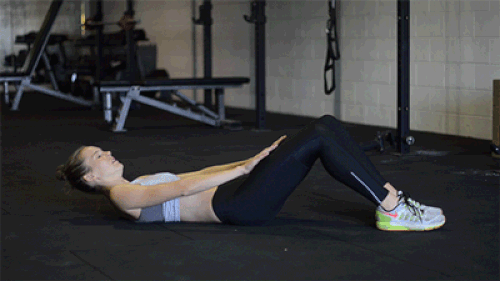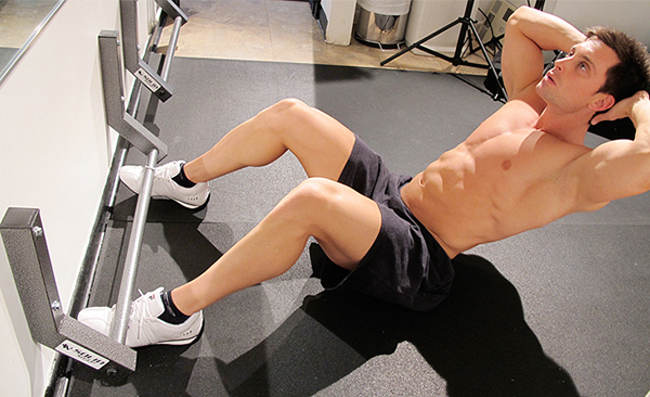Unexpected misconceptions about Sit-ups - the most popular abdominal cramping of all time
Many people think that doing a sit-up abdomen is a lot more quickly than having a "6 pack" standard body. But in reality .
Most of us know the sit-ups , which are the basic movements that are used a lot in gym classes and gym sessions to strengthen the abdominal muscles.

But how effective is it? According to a 2011 review, Strenghth and Conditioning magazine compiled data from all sit-up studies, suggesting that this exercise improves flexibility and muscle strength. Moreover, the training process also causes the spine to bend and then stretch to help distribute nutrients to the spinal discs to be better, avoiding degenerative symptoms.
However, we are having unbelievable misconceptions about this basic full stomach bend.
First, Sit-ups do not taper the abdomen .
The current society is making us sit more than ever. And also thanks to that, a generation . the belly belly is looking at each other day by day, nothing can be done except to bend like crazy at home because there is no time for gym.

But in a small randomized experiment in Illinois (USA) in 2011, volunteers were divided into two, one group performed daily sit-ups and a group exercise.
After 6 weeks of measuring body parameters, the conclusion is that sit-ups increase abdominal muscle strength but do not make any significant changes to waist size and fat around the abdomen.
In other words, sit-ups are not meant to burn fat, so a big belly with a continuous crunch has no effect.
. also does not increase motor performance
Many athletes perform sit-ups as part of the entire core stability improvement exercises - thereby increasing motor performance.

But research by Dr. Thomas Nesser from Indiana State University (USA) found that core stability has no significant correlation to motor function and performance.
And can lead to unwanted harm
Stuart McGil, professor of spinal biology at University of Waterloo (Canada), who studies sit-ups for many years, believes that traditional sit-ups can actually be harmful.
Stuart has conducted dozens of laboratory studies of vertebrate biology with dead bodies. The reason for choosing pigs as experiments is because their spine is more like a human spine than many other animals.

Pigs are also brought to sit-ups but the results are not good
In the study, the backbone of the pig was repeated repeatedly, similar to the way people do sit-ups, only one "practice" session will be done continuously for many hours. Later, when examining the spinal discs, Stuart found that they were compressed to the point of protrusion. If the same thing happens in humans, the discs will insert into nerves, cause back pain and even lead to disc herniation .
Although the results are not convincing because pigs and people still have many differences, do not rush to celebrate. A study conducted in 2005 on US soldiers blamed 56% of all injuries that occurred during the two years of military fitness tests that were caused by sit-ups.

In addition, some practical tests show that average sit-ups can still lead to spinal pain . However, this harm only occurs in certain people.
So when you start, you should practice less and gently, if you feel pain, you should stop and consult an expert.
So how do you need sit-ups to limit risks?
Professor Stuart McGil advises you when you practice, you should slide your hands down to the lower back to prevent this part from lying flat to the floor, helping to reduce pressure on your back. Bend one knee and stretch the other knee. Then slowly raise the head and shoulders to enough to not bend the spine or lower back, remain still for about 7-8 seconds and then return to the original position and repeat the movement.

Each time you practice, you can perform 4-5 continuous movements, rest for about 30-60 seconds, change your legs and then repeat the whole process from 1 to 2 times more.
As for Bret Contreras, Ph.D. at Auckland University of Technology (New Zealand), it is advisable to limit the number of sit-ups to be performed continuously for no more than 60 in one session, with the beginner number. The gesture is 15 before slowly lifting.
One thing to keep in mind is that when people sleep overnight or sit for a long time, the height will increase a little, work make sit-ups more difficult and increase the risk of injury. Therefore, do not practice immediately after you sit for a long time or just wake up in the morning.

This episode turns out to be "harmless"
- Deciphering mistaken thinking about Plank - The movement of practicing abdominal muscles everyone practice every day
- 7 popular notions everyone thinks right about the countries of the world, but it turns out all was wrong
- Abdominal pain warns of many dangerous diseases
- Guess the disease by location 6 pain everyone should know
- 12 causes of upper abdominal pain
- What is the disease?
- Getting sick through abdominal pain
- The odd misconceptions in science
- Scientific truth about misconceptions everyone believes
- 3 misconceptions in eating many people suffer
- Misconceptions about exercise
- Frequent abdominal pain, check for signs of ovarian cancer
 'Fine laughs' - Scary and painful torture in ancient times
'Fine laughs' - Scary and painful torture in ancient times The sequence of numbers 142857 of the Egyptian pyramids is known as the strangest number in the world - Why?
The sequence of numbers 142857 of the Egyptian pyramids is known as the strangest number in the world - Why? History of the iron
History of the iron What is alum?
What is alum?